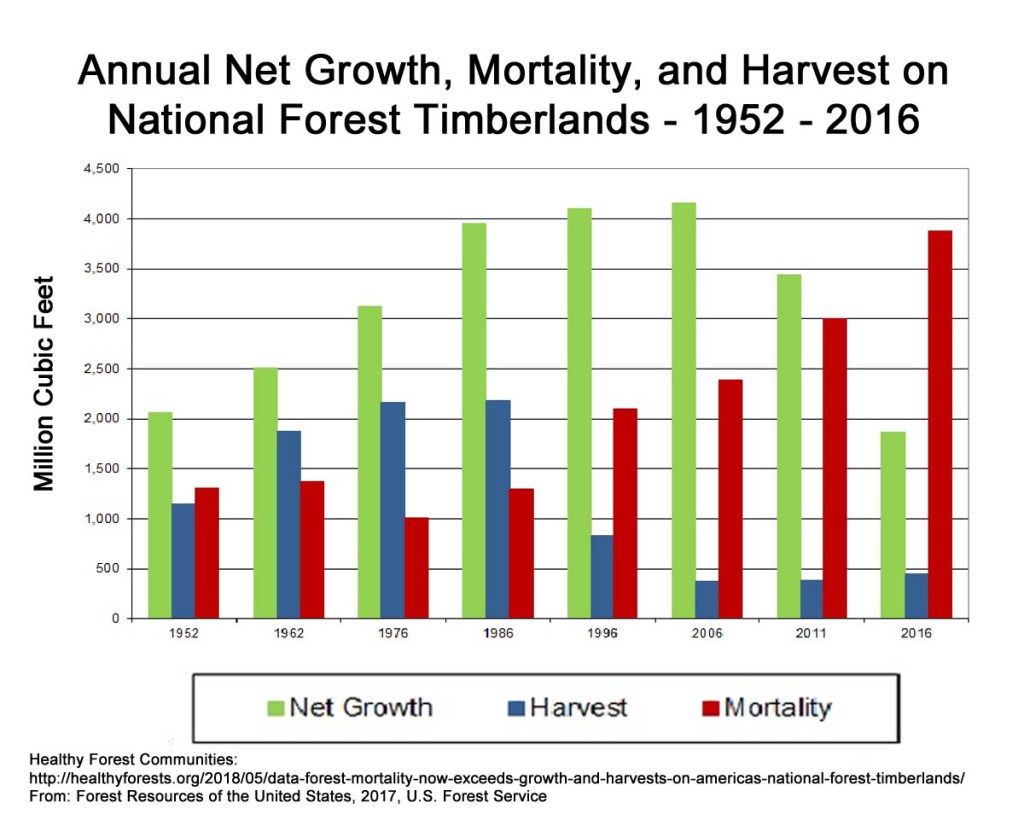The possibility of forest restoration in western North America is rapidly dwindling. The rate at which our national forests are dying foretells a scenario where recovery can only happen if we reduce warming. Reducing warming requires removal of long-lived climate pollutants from our skies. Emissions reductions alone allow continued and dramatic warming which will only enhance forest dieback further.
Forest2Market was started in 2000 by Peter J. Stewart with a mission “to empower participants in the global forest, wood products, paper products, biochemical and bioenergy industries to make exponentially better decisions through the strategic application of industry expertise and unique datasets.” Their Market Watch post on May 18, 2018 summarizes Forest Resources of the United States, 2017: a technical document supporting the Forest Service 2020 Resource Planning Act (RPA) Assessment. The following quotes of from Forest2Market’s post:
“Per a 2017 Resources Planning Act (RPA) Assessment update to the Forest Resources of the United States technical document, the situation in public, government-managed forests in the western US is dire. Based on new data published in this RPA, the U.S. Forest Service (USFS) says that forest mortality exceeded net growth on America’s national forest timberlands in 2016.”
“Forest growth was 48 percent of mortality, while timber harvests were a mere 11 percent of what is dying annually—and this trend is on the rise. The agency estimates that 6.3 billion dead trees were standing in 11 Western states in 2015, up from 5.8 billion in 2010.”
They summarize western states standing dead timber in 2015:
- Montana: 1.2 billion, up 159 million since 2010
- Colorado: 834 million, up 153.2 million since 2010
- Idaho: 814 million, up 76 million since 2010
- Wyoming: 619 million, up 8.8 million since 2012
- Washington: 593 million, up 24.3 million since 2011
- Oregon: 571 million, down 7.7 million since 2010
- California: 499 million, up 29.5 million since 2010
- Utah: 436 million, up 30.9 million since 2010
- New Mexico: 341 million, up 20.4 million since 2013
- Arizona: 275 million, up 4.8 million since 2010
- Nevada: 145 million, up 1 million since 2012
Healthy Forests Healthy Communities put the data together like this:


Quotes and graphs from:
Forest2Market
Healthy Forests Healthy Markets

